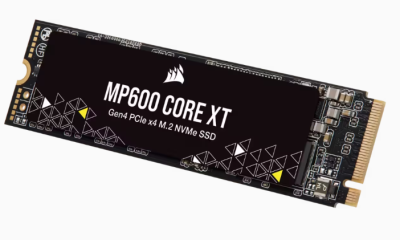Technology
3 Reasons You Should Use a Data-Fabric Software

Considering the world’s digital transformation rate, every company has become a data company. Some are finding it hard to accept. But for the many modern organizations who have, big data has become a mainstay of business decisions. Modern data comes with many challenges for data engineers, from data integrity and security issues to data in silos. The more reason why new data tech like data fabric is increasing in adoption. This article delves into the concept of data fabric and provides three reasons to join the data fabric train.
Data Fabric Defined
The world produces over two quintillion bytes of data spanning across disparate data sources every day. But more data doesn’t automatically translate into more data benefits. Real-time access and ease of use are among the many factors that make the difference. But how can this business manifest for businesses?
Having multiple data warehouses—which is the most common option—has never really been a lasting solution. But according to research, 91% of businesses today are victims. At best, it increases data managers’ workload and threatens convenient data access, making data integration more difficult. Gartner predicts a rush for efficient data solutions in the near future. That’s where data fabric enters the play. A data fabric is a single environment that simplifies and integrates data management across clouds and on-premise data warehouses.
It comprises a set of data services that provide consistent capabilities across an enterprise’s choice of endpoints. The data fabric architecture involves three main components. Data virtualization, which is the first, presents enterprises with an efficient alternative to the data integration process. Then comes data catalogs which use metadata for data discovery and classification. The third is a knowledge graph that establishes relations between similar data sets.
Together these three components fuel the data management process using data fabric solutions. Businesses with a data fabric platform can turn data from different sources into a single data set, irrespective of data type, formats, etc. Data fabric has become increasingly beneficial as general data volumes increase in both size and variety. The limitations in dealing with a data lake, cloud storage, unstructured data, and other silos have been reduced significantly.
Companies can now have that holistic approach they desire to generate faster insights and analytics for data-driven decisions. Big data fabric has expanded in operation use cases. Generally, the uses cases include self-service data use, automated governance, and multi-cloud environments. However, the type of use cases varies by industry. While some opt for predictive analytics in machine learning ML algorithms, others could be using business-intelligence software. But why use a data-fabric software for your business? Here are three specific reasons.
1. Agility and Resilience
The ultimate goal of data fabric solutions is to create an adaptable data management approach with seamless access for business users and all other stakeholders. Such flexibility in data systems is important for agile business operations and management. Data fabric with its advanced analytics can help businesses build agility and resilience into their data management efforts. For the enterprise today, this has become even more important considering the rampant cases of data loss.
2. Enhanced Data Access
Enhanced data access is one of several business requirements which is non-negotiable for data consumers. Getting access to the right data at the right time is the only way for data users to realize the value of your data. Data fabric enables frictionless access in a distributed data environment. As more workplaces favor remote working, faster data access has become even more crucial.
With a data fabric, the sharing of data among a workforce becomes easier. In addition to all the efficiency gains of faster data access, it also gives organizations a competitive edge to attain new heights of scalability.
3. Optimized Data Security
One of the primary benefits of data fabric is its power to standardize data management in a hybrid multi-cloud environment. Data fabric platforms clean data and ensure faster access, so data stewards can establish policies to detect anomalies quicker.
-

 Technology4 years ago
Technology4 years agoAcing the Holiday Video Marketing: a Complete Beginner’s Guide
-

 Pokémon Go3 years ago
Pokémon Go3 years agoHow to Get Mega Candy in Pokémon Go [Mega Evolution]
-

 Blog1 year ago
Blog1 year agoExploring Unique Methods for Overcoming Depression
-

 News2 years ago
News2 years agoThe MP600 Mini and MP600 Core XT M.2 NVMe SSDs Are Now Available From CORSAIR












